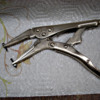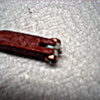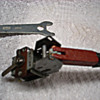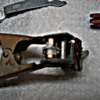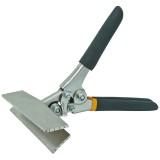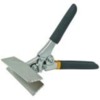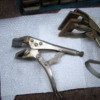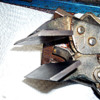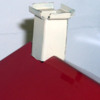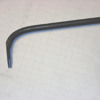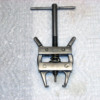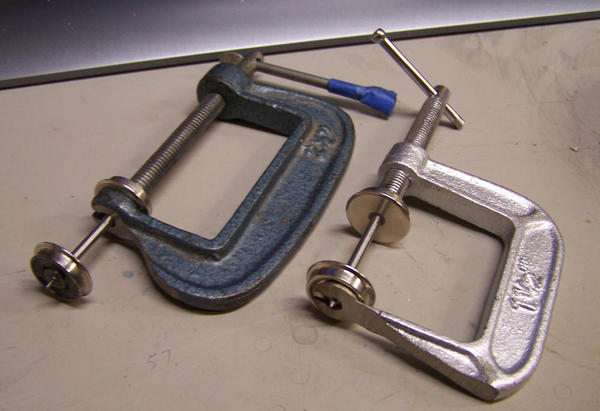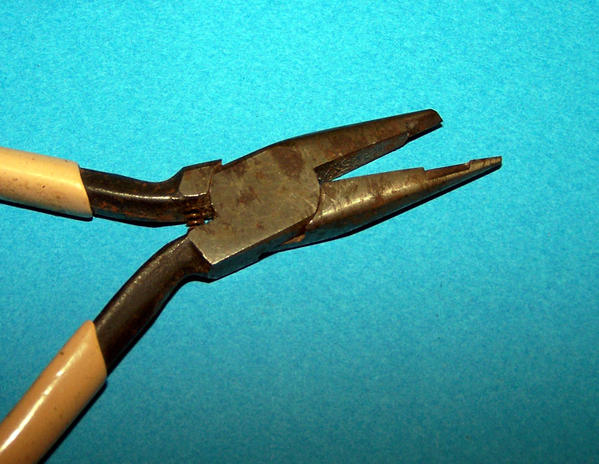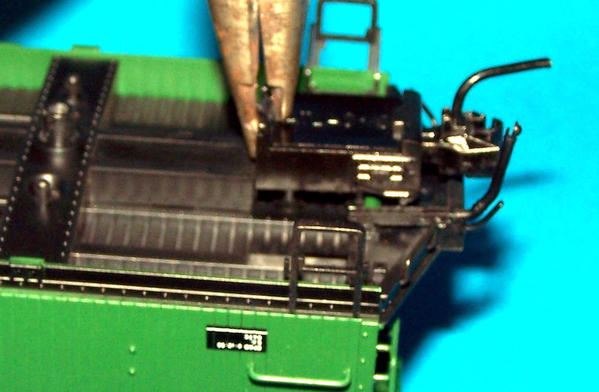Hi,
There has been interest in some of tools I use for repairing Lionel trains and accessories so I’d like to share what makes my repairs a little easier. The first two pics are of a hand held small rivet and eyelet press that costs less than $10.00. This tool works great on knuckle couplers, switch repair and replacing the carbon rollers pickups for ZW and KW transformers. You can repair all four rollers w/o taking the assembly apart, takes about 15-20 minutes. Anywhere you need to press small rivets or eyelets, even in close quarters, you can use this easy to make tool.
An inexpensive pair of needle nose vise grips drilled and tapped for 2 4-40 cap screws as shown in the pic, and a couple of locking nuts. Peen over the rivets that hold the vise grips together to tighten the action, this will center the clincher with the anvil. Grind the top screw to a soft round tip as shown, grind the bottom head of the screw till its flat with a small depression in the middle to hold the head of the rivet. Size the jaws to the rivet by holding it between the clincher and anvil and adjusting the jaw gap until you can lock it while gently holding the rivet in place, remove rivet and slightly close the gap, this way it will flare the rivet and lock it in place.
I will admit that a HH or Lionel arbor press does a neater job, but for those of us who don’t have hundreds of dollars to invest my press is an affordable alternative. I have used this hundreds of times and never had a rivet back out on me.
The next five pics are the tools I use to rebuild E units. The cost will be nothing, as you probably have these in your home now. The second pic show the "Stick"a piece of half inch square oak drilled and carved to conform to the shape of the E unit drum. I coated it with liquid insulator material to make the jaws slightly tacky to grip the drum so it won’t fall out while in use. The flat wrench with the bent offset has two uses. The small end is used as a cam action spreader to separate the sides of the E unit, simply work it in and rock it side to side. You can buy a tool for $10.00, mine was free, its an adjusting wrench for bi-fold doors all I did was put the offset bend in it. I also use this to tighten the mounting nuts for replacing binding post on a ZW, works great in the confined area.
Step by Step.
Once opened up replace the 4 finger contact first, while putting slight pressure on the sides use the Stick to position the drum in mounting holes. Continue to hold it together use the spring clamp as shown, next insert the two finger contact. The spring tension on the clamp isn’t too tight and allows you to spread the sides to insert the two finger contact. Last, lock the sides into the holding pin.
You can buy a finely crafted machined E unit jig for $100.00 or you could use my Stick for free.
I have other tools, eg. hand brakes, bending jigs for handrails and grabs, simple ways to make
life a little easier and less expensive in the repair shop, and would share them. I hope this would turn into an ongoing discussion of your inventive ideas. A good idea becomes a great idea when its shared.
Regards,
Joe Geiser




